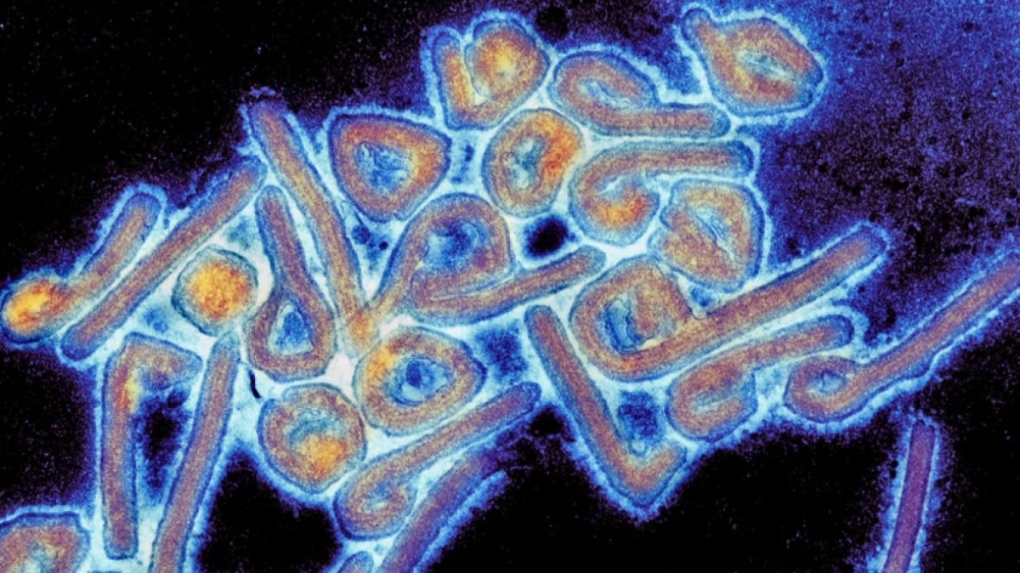
B.C. tenants evicted for landlord's use after refusing large rent increase to take over neighbouring suite
Ashley Dickey and her mother rented part of the same Coquitlam duplex in three different decades under three different landlords.
Equatorial Guinea has confirmed another eight cases of the "highly virulent" Marburg virus, a deadly hemorrhagic fever with no authorized vaccine or treatment.
The World Health Organization on Thursday said that brings the country's total number of cases to nine in the outbreak declared in mid-February.
There are two known current outbreaks of Marburg on the African continent. Tanzania this week announced eight cases of Marburg, including five deaths. One of the people killed was a health worker.
"Our pathogen genomics team will sequence samples from both places ... and see if there is a relationship between the current two outbreaks," the acting director of the Africa Centers for Disease Control and Prevention, Ahmed Ogwell, told journalists on Thursday. He said results should be known within the week.
The WHO said the new cases in Equatorial Guinea were found in the provinces of Kie Ntem, Litoral and Centro Sur, all with borders with Cameroon and Gabon.
"The areas reporting cases are about 150 kilometres (93 miles) apart, suggesting wider transmission of the virus," the United Nations agency said.
Like Ebola, the Marburg virus originates in bats and spreads between people via close contact with the bodily fluids of infected people, or surfaces, like contaminated bed sheets. Without treatment, Marburg can be fatal in up to 88% of people who fall ill with the disease.
Marburg outbreaks and individual cases have in the past been recorded in Angola, Congo, Kenya, South Africa, Uganda and Ghana, according to the WHO.
The rare virus was first identified in 1967 after it caused simultaneous outbreaks of disease in laboratories in Marburg, Germany, and Belgrade, Serbia. Seven people died who were exposed to the virus while conducting research on monkeys.

Ashley Dickey and her mother rented part of the same Coquitlam duplex in three different decades under three different landlords.
A man who fell into a crevasse while leading a backcountry ski group deep in the Canadian Rockies has died.
A new survey by Dalhousie University's Agri-Food Analytics Lab asked Canadians about their food consumption habits amid rising prices.
MPP Sarah Jama was asked to leave the Legislative Assembly of Ontario by House Speaker Ted Arnott on Thursday for wearing a keffiyeh, a garment which has been banned at Queen’s Park.
Charlie Woods failed to advance in a U.S. Open local qualifying event Thursday, shooting a 9-over 81 at Legacy Golf & Tennis Club.
As Donald Trump was running for president in 2016, his old friend at the National Enquirer was scooping up potentially damaging stories about the candidate and paying out tens of thousands of dollars to keep them from the public eye.
After Prime Minister Justin Trudeau said the federal government would still send Canada Carbon Rebate cheques to Saskatchewan residents, despite Saskatchewan Premier Scott Moe's decision to stop collecting the carbon tax on natural gas or home heating, questions were raised about whether other provinces would follow suit. CTV News reached out across the country and here's what we found out.
A Montreal actress, who has previously detailed incidents she had with disgraced Hollywood producer Harvey Weinstein, says a New York Court of Appeals decision overturning his 2020 rape conviction is 'discouraging' but not surprising.
Caleb Williams is heading to the Windy City, aiming to become the franchise quarterback Chicago has sought for decades.

Mounties in Nanaimo, B.C., say two late-night revellers are lucky their allegedly drunken antics weren't reported to police after security cameras captured the men trying to steal a heavy sign from a downtown business.
A property tax bill is perplexing a small townhouse community in Fergus, Ont.
When identical twin sisters Kim and Michelle Krezonoski were invited to compete against some of the world’s most elite female runners at last week’s Boston Marathon, they were in disbelief.
The giant stone statues guarding the Lions Gate Bridge have been dressed in custom Vancouver Canucks jerseys as the NHL playoffs get underway.
A local Oilers fan is hoping to see his team cut through the postseason, so he can cut his hair.
A family from Laval, Que. is looking for answers... and their father's body. He died on vacation in Cuba and authorities sent someone else's body back to Canada.
A former educational assistant is calling attention to the rising violence in Alberta's classrooms.
The federal government says its plan to increase taxes on capital gains is aimed at wealthy Canadians to achieve “tax fairness.”
At 6'8" and 350 pounds, there is nothing typical about UBC offensive lineman Giovanni Manu, who was born in Tonga and went to high school in Pitt Meadows.
 An electron microscope photo of the Marburg virus. An outbreak of the deadly virus has been confirmed in the Central African country of Equatorial Guinea. (Thomas Geisbert/University of Texas Medical Branch)
An electron microscope photo of the Marburg virus. An outbreak of the deadly virus has been confirmed in the Central African country of Equatorial Guinea. (Thomas Geisbert/University of Texas Medical Branch)